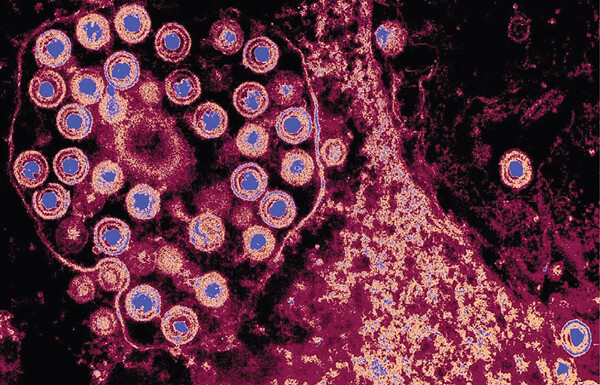A recent study conducted by researchers from the University of Colorado and the University of Bourgogne in France has provided new insights into how herpes simplex virus type 1 (HSV-1), commonly associated with cold sores, can invade the brain and central nervous system.
While it is established that HSV-1 can enter the central nervous system via the trigeminal or olfactory nerves, the mechanisms through which the virus spreads within the brain remain unclear. This research aims to clarify how HSV-1 affects different brain regions and the implications of these infections for neurodegenerative diseases.
The study mapped the various brain regions impacted by HSV-1 infection in mice, revealing that the virus predominantly affected critical areas such as the brain stem and hypothalamus. The brain stem plays a vital role in regulating essential functions like heart and respiratory rates, while the hypothalamus is crucial for regulating sleep, mood, appetite, and hormonal balance. Notably, the research also found that some regions, including the hippocampus and cortex, which are often linked to memory and cognitive functions, did not exhibit HSV-1 antigens. This suggests a selective vulnerability of certain brain areas to the virus.

Researchers examined the activity of microglia, the central nervous system’s immune cells, which showed signs of inflammation in response to HSV-1. This inflammation persisted even after the viral presence diminished, indicating a potential ongoing inflammatory process in the brain. While the study did not observe full-blown encephalitis, a serious condition characterized by widespread brain inflammation, the findings suggest that HSV-1 could still compromise brain function and health without triggering severe symptoms.
The connection between HSV-1 and neurodegenerative diseases, particularly Alzheimer’s disease, is of growing interest to scientists. The study’s results contribute to a better understanding of how HSV-1 may relate to the onset and progression of Alzheimer’s and other neurological conditions. Chronic inflammation caused by persistently activated microglia could play a role in the development of these diseases, highlighting the importance of understanding viral interactions with brain health.
In summary, this research sheds light on the implications of HSV-1 infections for brain health, particularly in relation to neurodegenerative diseases. By identifying the brain regions affected by HSV-1 and understanding the inflammatory response of microglia, the study provides valuable information for future research aimed at uncovering the connections between viral infections and neurological disorders. This knowledge is critical for developing strategies to mitigate the impact of HSV-1 and similar viruses on overall brain health.
